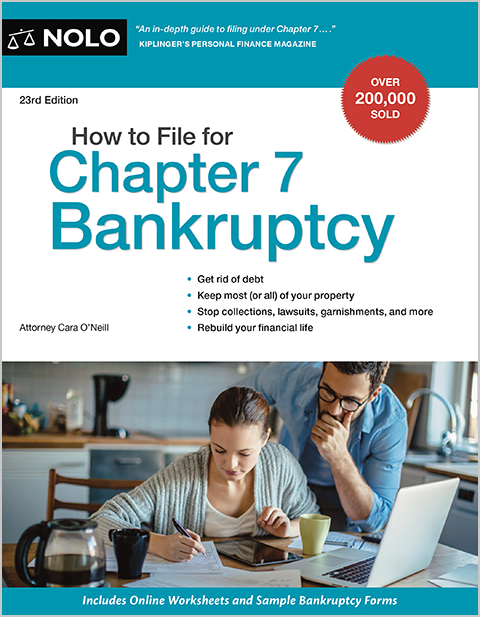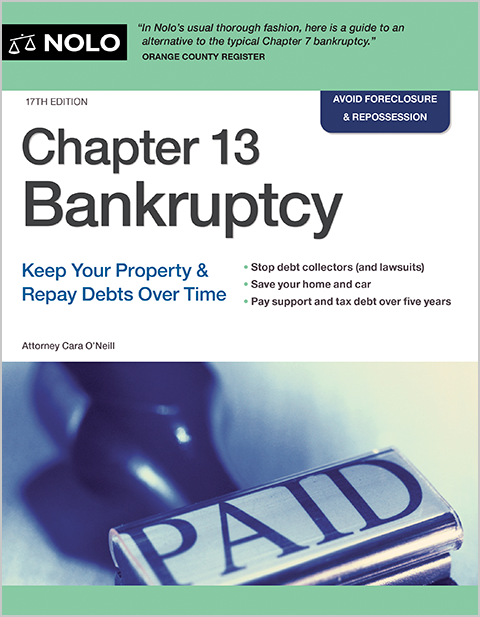You might not be able to get rid of recent cash advances or credit card charges for luxury items made shortly before filing for bankruptcy.
Loading up your credit cards just before you file for bankruptcy might be something you live to regret. Debts from purchases and cash advances taken just before filing for bankruptcy aren't always "discharged" or extinguished by the bankruptcy. Certain purchases are on your creditor's radar, including:
- luxury goods purchased within 90 days of the bankruptcy, and
- cash advances taken within 70 days of the bankruptcy.
A judge will decide whether these debts will survive your bankruptcy. In most cases, the law gives creditors an advantage called "presumptive fraud" that helps creditors prove the case against you. If you lose, you'll be responsible for paying the charges after your Chapter 7 bankruptcy case ends or during your Chapter 13 matter.
Using Credit Cards With No Intent to Pay and Bankruptcy Fraud
If you purchase items on credit knowing that you won't pay the bill, it's considered fraud. Debts obtained through fraud are not dischargeable in bankruptcy. There are different types of fraud in bankruptcy, and what the creditor must prove is easier depending on the circumstances.
When these purchases aren't for luxury items or were made more than 90 days before the bankruptcy filing, the creditor has to prove to the court that the purchaser didn't intend to pay when the purchase was made. This is a heavy burden of proof because the creditor must show the intent to commit fraud and not just an inability to pay.
It isn't enough to show that you used your credit card during bad financial times or that it was unlikely that you would be able to pay. The creditor has to prove to the court that you never intended to pay. Even so, the inability to pay is considered a hallmark of fraud. A case can build fast when coupled with other evidence, such as meeting with a bankruptcy attorney.
However, when the purchases are for luxury items, and the charge occurred within 90 days before filing for bankruptcy, the law presumes that you made these charges fraudulently. It is much harder to discharge these types of debts. The same holds for cash advances taken within 70 days of a bankruptcy filing.
Filing for Bankruptcy After Charging Luxury Items on a Credit Card
The presumptive fraud rule prevents a debtor from discharging credit card purchases from one creditor for luxury items made within 90 days of a bankruptcy filing if those charges are greater than $900. (This figure is accurate for cases filed between April 1, 2025, and March 31, 2028.)
Any lavish purchases made on credit during the 90 days before the bankruptcy filing are presumed to be fraudulent. The creditor doesn't have to present evidence to the court that there was no intent to pay when the purchases were made to prove fraud. As long as the debtor made the purchases during the 90 days before filing, the creditor need only file an adversary proceeding (a lawsuit in the bankruptcy court called a complaint to determine dischargeability).
While it is technically the creditor's burden to show that the purchases were for luxury items, you are often stuck with the debt unless you can convince the court that they were not. If you challenge the creditor's characterization of a particular charge as a luxury item, the judge will make a determination at a trial on the matter called an "adversary proceeding."
What Is a Luxury Item?
In bankruptcy law, luxury items are any goods or services that aren't reasonably necessary for the support or maintenance of the filer or the filer's family. Past court decisions provide some guidance on what constitutes a luxury item, but you can't rely on these entirely because each case is different. Generally, any extravagant, indulgent or nonessential purchase is considered a luxury.
Courts also look to the purchase's circumstances to determine if it's a luxury item. Medical services are a good example. It's unlikely an emergency appendectomy would be considered a luxury purchase. In contrast, cosmetic Botox injections would likely be a luxury item.
Examples of luxury purchases. Items that some courts have found to be luxury items include vacation expenses, designer or excessive clothing purchases, expensive cosmetics, furnishings, and household goods to beautify and update the home, jewelry, a three-wheeled recreational vehicle, sporting goods, and oriental rugs.
Examples of non-luxury purchases. Necessary clothing or shoes, gas, groceries, and needed car and home repairs.
Filing for Bankruptcy After Withdrawing Cash Advances
If you take out cash advances that total more than $1,250 within 70 days of filing for bankruptcy, the amount isn't dischargeable in the bankruptcy. (This figure applies to cases filed between April 1, 2025, and March 31, 2028.) To be nondischargeable, the cash advances must:
- have been for a consumer purpose rather than a business purpose, and
- total more than $1,250 to any single creditor (two cash advances from two different creditors totalling $1,250 won't trigger the presumption).
The type of goods you ultimately purchase with the money from the cash advance doesn't matter. The luxury item determination only comes into play if you charge goods or services on a credit card.
Defending Presumptively Fraudulent Charges: Intent to Pay
When a presumption of fraud arises, you can present evidence that you intended to repay the debt. Typically, you'd use one of the common bankruptcy fraud defenses.
This may be difficult, and you'll probably need the help of a lawyer because you must provide supporting evidence that you intended to repay the debt. Merely telling the judge that you planned to repay the debt isn't enough. However, you might succeed if you can demonstrate that a significant event led to bankruptcy after you made the purchases.
Examples might include a catastrophic illness or the uninsured loss of a necessary vehicle or home. This is why not having the ability to pay at the time of purchase is strong evidence of fraud. Learn more about how your debts are treated in bankruptcy in Your Debts in Chapter 7 Bankruptcy and Your Debts in Chapter 13 Bankruptcy.
Need More Bankruptcy Help?
Did you know Nolo has made the law accessible for over fifty years? It's true, and we wholeheartedly encourage research and learning. You'll find many more helpful bankruptcy articles on Nolo's bankruptcy homepage, and information needed to complete the official downloadable bankruptcy forms is located on the Department of Justice U.S. Trustee Program.
However, online articles and resources can't address all bankruptcy issues and aren't written with the facts of your particular case in mind. The best way to protect your assets in bankruptcy is by hiring a local bankruptcy lawyer.
|
|

